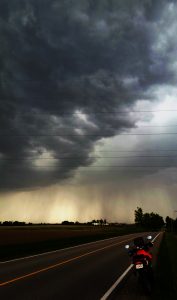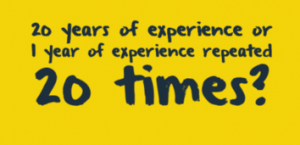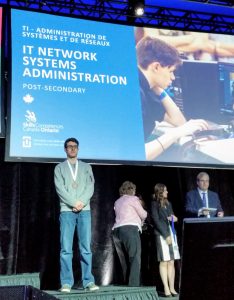We knew it was going to be a hot one before we started. We’d done the last Lobo Loco rally (with great success!) on an equally hot and dry day, so we didn’t give it much thought.
Our cunning plan was to head up to Jeff’s cottage and then drive from the shores of Huron up to Southampton and then down through Southwestern Ontario before finishing up in Brampton. We’d been pouring over the rally map for days working out the best route. Stops were thin on the ground this time around, so the 16 stop plan I concocted seemed eminently doable and quite competitive.
Last time we’d won the longest (worst?) route award. This time we were cutting over a hundred clicks off last year’s marathon that had us burning through the atmosphere to get to the finish in the nick of time.
A wrench was thrown into the works a week before this rally when Wolfe Bonham, our improbably named rally master, threw a bonus in that had us radically rethinking our route. If we could connect together towns that started with a ‘W’ a ‘T’ and then an ‘F’, we could pick up a cumulative bonus for each set of three. We were out in the country with tiny towns everywhere. This was a distinct advantage as those in the Greater Toronto Area had paved over all their small towns and called them one thing. With points so thin on the map, this seemed like the way to go.
Jeff had headed up to his internet-less cottage the night before. I followed him up the next day, about 12 hours before the rally would start with all sorts of WTF towns lined up and a Google Map saved on my phone so I could access it off-line. It was cooking hot on the way up, well into the 90s Fahrenheit and with a relentless wind that had me riding with a permanent 10° lean. Winds were gusting even higher by the lake.
After a good dinner we went for a walk and watched the sun fall into Huron before we got down to the business of mangling our carefully built route.
Each WTF town combo built on itself, and the only stipulation was that you had to do them in order. You could do other bonuses in between, so in theory you could do multiple WTFs within and around each other.
Our initial route had us riding north out of Point Clark and up to Southampton before looping back through Chesney and Walkerton, down past where we live, over to the escarpment and then down the 401 to Brampton. We threw out Georgetown, Milton and riding along the 401 to the finish line to begin with because neither of us like riding in population – that prejudice would end up derailing us later.
I was loath to throw out our loop north around Southampton and tried to fit in some early, multiple WTF town combos. Our original score would have been in the seven to eight thousand range, but with a couple of cuts we’d have 7000 in regular stops and four WTF combos worth 1500, 2000, 2500 and 3000 points. That would have had us finishing with upwards of sixteen thousand points; it felt like a sure victory! Even with the extra stops we were still lower mileage than our marathon from last year, though with almost no highway riding at speed.
As the wind continued to howl around the cottage we finally put the map down and went for a short sleep. The next morning we woke up to tree limbs down and many branches blown off. Unlike most mornings, it was still wild and windy on the shores of Huron and the temperature was already climbing.
We got out early and filled up right at 8am at a little two pump gas station in Amberley. Instead of heading north up the coast we cut inland, searching for our first WTF town bonus.
Along the way we stopped in Lucknow for a terrifying statue that suited the rally theme (WTF?). After piling on those points I realized we didn’t have to go all the way to Wingham for our ‘W’ as Whitechurch was on the way. We were tripping over ‘W’ towns!
The combos had begun, except it was so windy that my rally flag blew onto the highway in Whitechurch and I had to stuff it into the fairing to stop it going walkabout again.
A quick Google maps detour had us in the scenic town of Teeswater only a few minutes later. This time the rally flag flew into a farmer’s field. Since we were emailing the stops in as we went (an annoyingly time consuming task), we got a warning that rally flags needed to be in every shot. Short of some crazy glue or a photo crew following us along, I wasn’t sure how we were going to do that.
We pressed on to the even prettier town of Formosa which had suddenly gotten hilly as we neared the edge of the Niagara escarpment. Once again I was comedically chasing the rally flag into ditches and missed it in the photo. We were off again, this time headed for a village that didn’t actually show up on most maps: the mythical berg of Westford (not to be confused with Westworld).
After the road turned to gravel, then dirt, then went into a full on bayou as we entered the Greenock Swamp Wetland Complex (I couldn’t make this up), we found Westford! As we took the picture to start our second WTF town combo we got a message saying our rally flags weren’t showing. Whether this was a warning or a three thousand point penalty (we wouldn’t be losing our first WTF bonus, we’d be losing our last), it took the wind out of our sails. We’d been having a great time on our big adventure bikes slashing through the wetland complex to find the nearly fictional village of Westford only to wonder if our first 90 minutes of hard going had been for nothing.
We tried to shake it off as we saddled up and headed over to Tiverton for our next target. The sun was starting to bake everything and the wind was relentless, but for the next little while we had it at our backs, so life was good.
| The roads got gravelly, then dirty, then muddy! Circumnavigating the Greenock Wetland Complex was a good time! |
Tiverton arrived, but now we wondered what it was worth. At that point we re-prioritized getting the rally flag clearly in every picture. Since we were partnered up this was a relatively straightforward prospect, Jeff would take a photo of me with my phone then I’d take one of him with his. I still wonder how other competitors working solo managed to take photos of themselves, their bike and a clear rally flag in sixty kilometer per hour gusts.
We were now working our way north up the coast Lake Huron and past the Bruce Nuclear power plant. By mid-morning the temperatures were soaring. Fortunately the great lake next to us did something to take the edge off. At no point were we lolligagging, with quick stops and efficient speed between them. We pulled into Southampton well before noon and collected two more regular stops. From there we angled eastward and then south, into that fearsome wind, for the main leg of the rally. We felt on top of the time and ahead of schedule.
| Passing under the main output from the Bruce Nuclear Power Plant. An operator there was the former owner of my radioactive orange Tiger! |
Southampton was busy on a sunny June weekend with lots of traffic and lights. Up until then we’d been safely ensconced deep in the country, but now we were trying to make time with people all around.
A big dog and a house covered in lawn ornaments (I know, WTF, right?) and we were back out on country lanes making (hot) wind as we headed east toward Owen Sound.
I’d never been to Tara, Ontario before, though my parents once entertained ideas about moving there. It’s a pretty little town with lots of old, brick buildings. That became a theme of this ride. Small Southern Ontario towns have these beautiful old brick buildings in the empty hearts of most of them. In Southampton an enterprising group had turned one into The Outlaw Brew Company. Passing it I was struck with the idea of just stopping and going in. Why am I tear assing around like this? Jeff and I both put a pin in that one though, we’ll be back.
Visions of reclaiming an old brick building in rural Ontario and turning it into a motorcycle themed digital foundry, coffee shop and nano-brewery (only for local consumption) floated around in my heat soaked brain. The stop in Chesley included a giant cow (WTF?) and then we were on to Walkerton for a sadder WTF.
Walkerton was where my son Max and I drove to pick up the Tiger on a cold spring day over a year ago. I’ve got a soft spot for the place.
The memorial gardens to the people who died in 2000 when local water treatment failed to protect its own citizens was a difficult WTF stop to see. That it’s not downtown but hidden away by the municipal buildings in the south end bothered me. We finally found it and got our photo by the memorial waterfall. We left Walkerton (our third ‘W’ town) in a reflective state of mind.
We were pushing into the afternoon now and I started to fear for time. Even with ‘aggressive navigation’ between these towns, riding through them meant not being a tool and staying on the speed limits.
We got lost going south out of Walkerton on our way to Wroxeter to start another WTF town loop, but only lost about five minutes. Trowsbridge was a shot in the dark, barely a dot on the map, but we found it, and then wrapped up this loop within a loop within a loop in Fordwich. Checking the time we chucked Mount Forest out the window and started to run south.
We needed to close the Walkerton and Westford-Tiverton loops. Teviotdale got Walkerton hooked up and Fergus would close one of the two. We were originally going to head a bit west and hit Floradale, but we were running out of time fast. I then remembered that Forks of the Credit actually has a village sign, so that would close our last WTF town loop.
South out of Teviotdale we ran into a steady stream of Sunday traffic heading for Elora (it’s very pretty, I know, I live there). The next few stops were in our own backyard, but time was slipping away, and more problematically, we’d both gotten to the point where we obviously weren’t thinking clearly, which is bad when it’s almost a hundred windy degrees out and you’re on a motorcycle trying to make time.
We bombed south toward Elora, passing on the broken line when we could, but short of some back to the future motorcycling we weren’t going to do this thing. We had to stop for gas and I ran in and grabbed energy bars since neither of us had eaten anything in over seven hours. Chugging Gatorade and watching the heat waves come off the pavement, Jeff asked a good question: “do we want to go all the way to Brampton?”
For the first time I got off the must-finish train and thought about it. If we made it it’d be mighty close assuming a clean run into the GTA, which never happens (it turns out it wouldn’t have, there were miles and miles of construction on the main highway leading into Brampton that we learned about afterwards).
We were both spent. It was oven hot, we’d been fighting the wind all day and it looked like that same wind had thrown thousands of points in stops into question. The thought of fighting our way into the shity um, city, especially when we were standing in our own backyard was too much to take. We both had to go to work the next day and another three hours in the saddle (conservatively 1.5 hours each way plus surprise construction) put the final nail in the coffin.
That last picture of me passed out on the side of the road happened to be right outside of the Breadalbane. Ten minutes later we were sitting in the shade re-hydrating and ordering some locally sourced chicken wings; our day was done. The ride home from there was 7 minutes long with no traffic.
We texted our tap out but there were no regrets. We had a great day seeing all sorts of things we hadn’t seen before and finding several places that don’t officially exist. The missed flags at the beginning knocked us off our game, the heat and wind beat us down and ultimately the thought of fighting our way into any part of the GTA at the end was too much to bear.
A few days later we discovered the winner had over twenty-one thousand points and had made thirty-five stops while covering over 450kms. I’m still trying to work out how that was possible. We would have hit 25 stops on our way through a 435km ride had we done the whole thing.
Google Maps says that should take 6 hours and 2 minutes, but that assumes no stops. If you’ve got to find each place, a place to safely stop the bike where you can take a picture that meets the requirements, take the photo, send it via email, saddle up and go again, that sucks up time. This assumes that you immediately find each stop with no problems and don’t need to stop for gas, or eating, or drinking, or anything else.
35 stops at 3 minutes apiece (an astonishingly quick stop time) would mean you’d have six and a quarter hours to cover 457kms. That works out to an over 73km/hr average speed. That is quick if you take into account having to slow down and get back up to pace after each of 30+ stops, stop signs, traffic lights and traffic, not to mention speed limits on anything other than a highway.
We spent most of our time on empty country roads and we weren’t lollygagging. At one point Jeff told me to ease up because I was likely to attract the popo. If we came upon traffic we generally passed it. We covered 358kms and pulled the plug in Fergus at 2:48pm – 6hrs and 48 minutes in. Google tells me it was another hour and twenty-four minutes of riding to the finish line on our route, not counting the time needed to stop four more times. Our not lollygagging average speed before we pulled the plug with nineteen stops done was 52.65 km/hr. To make up for traffic lights, riding in towns, stop signs and traffic, we were doing a bit more than that most of the time. We didn’t waste time with silly things like eating. Until I’ve figured out how to bend the laws of physics it looks like a rally win is beyond my capabilities, or my willingness to take risks.
| A doable map – that we didn’t do. |
I’m away during the next two rallies, but I’ll be out there again in the fall. I’ve never done Port Dover on Friday the 13th, so that’ll give me an excuse to overcome my cruiser phobia and go.
I think the idea of pushing for a big points day is no more. I’ll enjoy the ride, see things I don’t normally see and make sure I’m not pushing so hard that I can’t enjoy the camaraderie at the end. That was the most disappointing aspect of the day, not hearing about all the other adventures that happened to everyone else.
In case you feel cheated by the lack of photography in this post, there is even more here:
http://ift.tt/2t2LgYf
from Blogger http://ift.tt/2t3bs4r
via IFTTT







